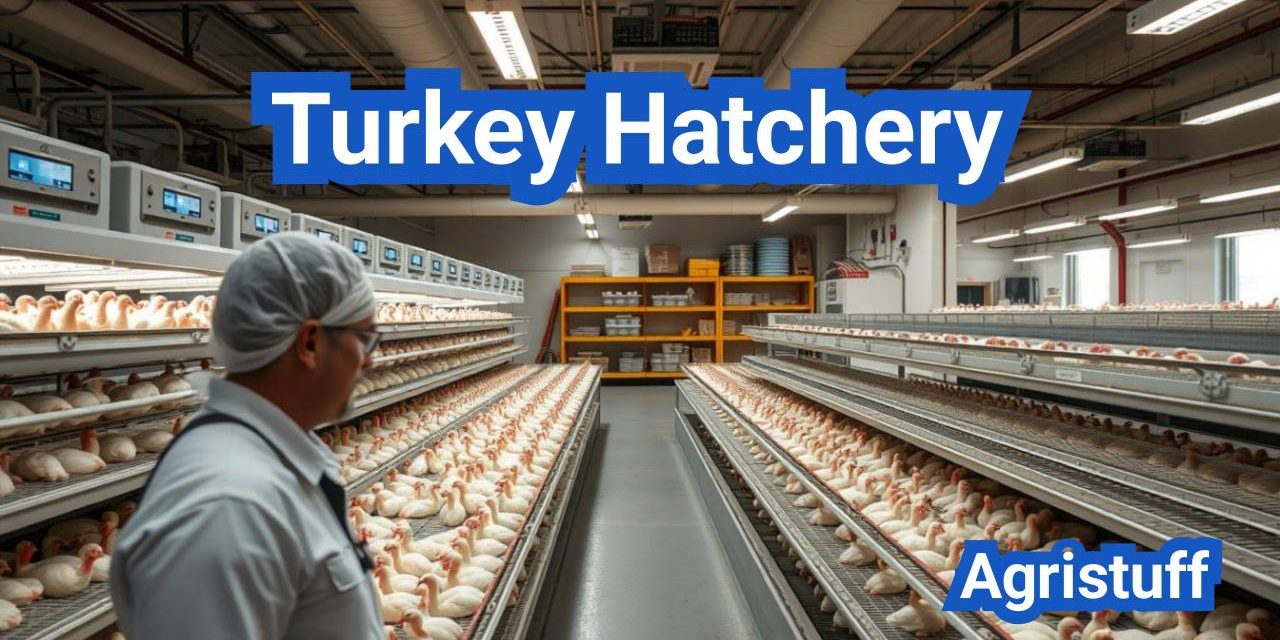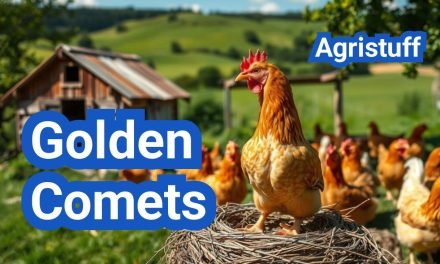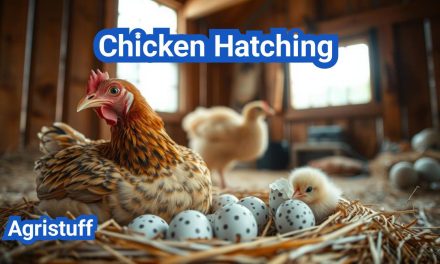Starting a turkey hatchery business can be a lucrative venture for those interested in the poultry industry. A turkey hatchery is a facility where turkey eggs are incubated and hatched, providing young birds for growers and producers.
Managing a successful hatchery requires careful planning, attention to detail, and a thorough understanding of the industry. For beginners, raising turkeys can be a challenging but rewarding experience. Effective hatchery management involves maintaining a clean and safe environment, monitoring egg quality, and ensuring the health and well-being of the birds.
Key Takeaways
- Understanding the basics of a turkey hatchery is crucial for success.
- Effective hatchery management involves maintaining a clean and safe environment.
- Monitoring egg quality is essential for producing healthy birds.
- Starting a turkey hatchery business requires careful planning and attention to detail.
- The poultry industry offers opportunities for growth and profitability.
Understanding the Turkey Hatchery Business
For those interested in entering the poultry industry, understanding the turkey hatchery business is essential. This venture involves more than just incubating eggs; it’s about creating a sustainable business that meets the demand for turkey poults.
A turkey hatchery is a facility where turkey eggs are incubated and hatched. The process requires precise control over temperature, humidity, and turning to ensure high hatch rates. Hatcheries supply poults to farmers for meat and egg production, playing a critical role in the poultry supply chain.
What is a Turkey Hatchery?
A turkey hatchery is equipped with incubators and hatchers designed to mimic the conditions necessary for turkey eggs to develop and hatch. The incubators maintain a consistent temperature and humidity level, while the hatchers provide a safe environment for the poults to emerge.
Market Demand for Turkey Poults
The demand for turkey poults is influenced by consumer demand for turkey meat and eggs. According to industry trends, there has been a steady demand for turkey products, driven by consumer preferences for lean protein. This demand translates into a need for reliable suppliers of healthy poults.
Profitability and Investment Overview
Starting a turkey hatchery requires significant investment in facilities, equipment, and initial stock. The profitability of the business depends on factors such as hatch rates, poult quality, and market prices for turkey products. Efficient management and a well-planned business strategy are crucial for achieving profitability in this competitive industry.
Planning Your Turkey Hatchery Business

To establish a thriving turkey hatchery, entrepreneurs must develop a comprehensive business plan. This plan should outline the mission, goals, target market, financial projections, and operational strategies for the hatchery.
Creating a Business Plan
A well-crafted business plan is essential for securing investments and guiding the growth of the hatchery. It should include market analysis, competitive analysis, and detailed financial projections. “A business plan is a roadmap to success,” says industry expert, emphasizing the importance of thorough planning.
The business plan should also cover operational aspects such as production capacity, marketing strategies, and staffing needs. For instance, a turkey hatchery might plan to start with a capacity of 10,000 eggs per week and expand based on market demand.
Legal Requirements and Permits
Understanding the legal requirements and obtaining necessary permits is a critical step in establishing a turkey hatchery. Regulations vary by state and locality, so it’s crucial to consult with local authorities to ensure compliance.
Some of the permits and licenses required may include:
- Business license
- Zoning permits
- Health department permits
- Environmental permits
Compliance with these regulations not only avoids legal issues but also enhances the reputation of the hatchery.
NPIP Certification Process
The National Poultry Improvement Plan (NPIP) certification is a voluntary program that provides a cooperative state-federal-industry effort to improve poultry health. To become NPIP certified, hatcheries must adhere to strict guidelines regarding flock health, sanitation, and disease control.
“NPIP certification is a mark of excellence in the poultry industry, ensuring that participating flocks are free from certain diseases,” according to the NPIP guidelines.
The certification process involves regular inspections, testing, and maintaining detailed records of flock health and management practices. This certification is highly regarded and often required by buyers of poultry products.
By carefully planning the business, complying with legal requirements, and obtaining NPIP certification, turkey hatchery operators can establish a reputable and successful business.
Setting Up Your Turkey Hatchery Facility
A well-designed turkey hatchery facility is crucial for the health and productivity of your turkey poults. The setup of your hatchery plays a significant role in determining the success of your operation.
Space Requirements
Adequate space is essential for the efficient operation of a turkey hatchery. The facility should be spacious enough to accommodate incubators, hatchers, and brooding areas without being overly crowded. A minimum of 1,000 square feet is recommended for a small-scale operation, but this can vary based on the size of your equipment and the number of poults you plan to produce.
The space should be divided into different sections for incubation, hatching, and brooding. Each area should be designed to minimize the risk of disease transmission and to facilitate easy cleaning and maintenance.
Environmental Controls
Environmental controls are critical in a turkey hatchery facility. The incubators and hatchers require precise temperature and humidity levels to ensure the healthy development of the embryos. Temperature control is particularly crucial, as deviations can lead to reduced hatch rates or unhealthy poults.
A reliable ventilation system is also necessary to maintain air quality and prevent the buildup of harmful gases. The facility should be equipped with backup systems for heating, cooling, and ventilation to mitigate the risk of equipment failure.
| Environmental Factor | Ideal Range |
|---|---|
| Temperature | 99-100°F |
| Humidity | 50-65% |
| Ventilation Rate | Adjustable based on age and number of poults |
Facility Layout and Design
The layout of your turkey hatchery facility should be designed to optimize workflow and minimize the risk of contamination. A linear layout is often preferred, as it allows for a straightforward flow from incubation to hatching to brooding.
“A well-planned facility layout is essential for maintaining biosecurity and ensuring the health of your turkey poults. It also helps in reducing labor costs and improving overall efficiency.” – Expert in Poultry Production
The facility should include areas for egg storage, incubation, hatching, and brooding. Each section should be equipped with the necessary equipment, such as incubators, hatchers, and brooders, and should be designed for easy cleaning and disinfection.
By carefully planning your turkey hatchery facility, you can create an environment that supports the health and productivity of your turkey poults, ultimately contributing to the success of your business.
Essential Turkey Hatchery Equipment

A well-equipped turkey hatchery is the foundation of a thriving business, providing the necessary tools for successful incubation and rearing. The quality and type of equipment used can significantly impact the health, viability, and overall success of the turkey poults.
Incubators and Hatchers
Incubators and hatchers are critical components of a turkey hatchery. Incubators provide a controlled environment for the eggs during the incubation period, maintaining optimal temperature, humidity, and turning conditions. Modern incubators often come with advanced features such as automated temperature control, humidity management, and egg turning, reducing labor and improving hatch rates.
Hatchers, on the other hand, are designed to provide the optimal conditions for the eggs to hatch. They are typically set at a slightly different temperature and humidity level compared to incubators. The hatcher environment is crucial for the final stages of incubation, and its conditions directly affect the health of the newly hatched poults.
“The quality of the incubator and hatcher directly influences the hatchability of the eggs and the health of the poults.” – Expert in Poultry Farming
Egg Handling Equipment
Efficient egg handling is vital in a turkey hatchery. This includes equipment for egg collection, storage, and transfer to the incubators. Egg handling equipment is designed to minimize damage to the eggs and reduce labor costs. Automated egg handling systems can significantly improve the efficiency of the hatchery operations.
- Egg candlers for checking egg viability
- Egg washers for cleaning eggs before incubation
- Egg grading machines for sorting eggs by size and quality
Brooding Equipment
After hatching, brooding equipment plays a crucial role in the early stages of a turkey poult’s life. Brooders provide a warm, safe, and healthy environment for the poults, equipped with heating elements, feeders, and waterers. Proper brooding conditions are essential for the poults’ growth and development.
The use of appropriate turkey hatchery equipment, from incubators and hatchers to egg handling and brooding equipment, is fundamental to the success of a turkey hatchery business. By investing in high-quality equipment and maintaining optimal operating conditions, hatchery operators can improve hatch rates, reduce mortality, and produce healthy turkey poults.
Turkey Breeding for Hatchery Success
Breeding turkeys for a hatchery requires careful planning and execution. The success of a turkey hatchery largely depends on the quality of the breeding stock and the effectiveness of the breeding program.
Breeding Stock Selection
Selecting the right breeding stock is crucial for the success of a turkey hatchery. The breeding stock should be healthy, genetically superior, and well-adapted to the production environment. Heritage turkey breeds can be a good option for those looking to diversify their products.
When selecting breeding stock, consider factors such as growth rate, fertility, and disease resistance. A well-chosen breeding stock can significantly improve the overall productivity and profitability of the hatchery.
Breeding Season Management
Effective management during the breeding season is vital to ensure high fertility and hatchability rates. This includes providing optimal nutrition, maintaining appropriate lighting schedules, and ensuring the health and well-being of the breeding birds.
“Proper nutrition is key to successful turkey breeding. A balanced diet that meets the nutritional needs of the breeding birds is essential for optimal reproductive performance.”
Monitoring the breeding flock regularly and maintaining detailed records can help identify any issues early on, allowing for timely interventions.
Genetic Improvement Strategies
Implementing genetic improvement strategies can enhance the quality and productivity of the turkey flock. This can involve selecting for desirable traits such as faster growth rates, improved fertility, and enhanced disease resistance.
| Trait | Selection Criteria | Benefits |
|---|---|---|
| Growth Rate | Selecting birds that grow faster | Reduced production time, improved efficiency |
| Fertility | Choosing birds with high fertility rates | Increased hatchability, more poults |
| Disease Resistance | Selecting birds with natural resistance to diseases | Reduced veterinary costs, healthier flock |
By focusing on these aspects, a turkey hatchery can improve its breeding program, leading to better outcomes and increased profitability.
Popular Turkey Breeds for Your Hatchery

Understanding the different turkey breeds available is essential for hatchery owners to make informed decisions. The right breed can significantly impact the productivity and profitability of your hatchery business.
Commercial Broad-Breasted Varieties
Commercial broad-breasted turkey breeds are widely used in the industry due to their fast growth rate and large size. These breeds are ideal for meat production and are often preferred by large-scale commercial producers.
Characteristics of Commercial Broad-Breasted Turkeys:
- Fast growth rate
- Large breast size
- High feed conversion efficiency
Heritage Turkey Breeds Overview
Heritage turkey breeds are known for their unique characteristics, such as rich flavor, diverse plumage, and foraging ability. These breeds are often used in specialty and niche markets.
| Breed | Characteristics | Use |
|---|---|---|
| Narragansett | Hardy, foraging ability | Meat, specialty markets |
| Slate | Rich flavor, diverse plumage | Meat, exhibitions |
| Royal Palm | Ornamental, foraging ability | Exhibitions, small farms |
Bourbon Red and Other Specialty Breeds
Bourbon Red turkeys are a popular heritage breed known for their rich flavor and reddish-brown plumage. Other specialty breeds like the Midget White and Beltsville Small White offer unique characteristics suitable for various production systems.
Advantages of Specialty Breeds:
- Unique appearance for niche markets
- Diverse genetic pool for breeding programs
- Rich flavor profile
By understanding the characteristics and advantages of different turkey breeds, hatchery owners can make informed decisions to meet the demands of various markets and production systems.
Turkey Egg Incubation Techniques
Effective turkey egg incubation techniques are crucial for hatchery success, involving a combination of proper equipment and meticulous care. The process demands a thorough understanding of the optimal conditions required for the development of healthy poults.
Optimal Incubation Conditions
Maintaining the right environment is critical for successful incubation. Temperature and humidity control are paramount, with ideal temperatures ranging between 99°F and 100°F, and humidity levels between 50% and 60% relative humidity.
- Temperature: 99°F – 100°F
- Humidity: 50% – 60%
- Turning: Regular turning of eggs to prevent embryo sticking
Egg Collection and Storage
Proper egg handling is essential from the moment eggs are collected. Eggs should be gathered frequently to prevent breakage and stored in a cool, dry place until incubation begins.
| Egg Handling Practice | Description | Benefit |
|---|---|---|
| Frequent Collection | Eggs collected often to reduce breakage | Reduces loss due to breakage |
| Cool Storage | Eggs stored in a cool environment | Slows down embryo development |
Monitoring and Turning Procedures
Regular monitoring and turning of eggs are vital during the incubation period. Eggs should be turned at least 3-5 times a day to ensure even development.
- Daily checks for temperature and humidity
- Regular candling to monitor embryo development
- Turning eggs 3-5 times daily
Troubleshooting Common Incubation Problems
Despite careful planning, issues can arise during incubation. Common problems include low hatch rates, abnormal chick development, and equipment failure. Identifying and addressing these issues promptly is crucial.
Brooding Turkey Poults

The initial weeks of a turkey poult’s life are crucial, and proper brooding is essential for their survival and growth. Brooding provides the young poults with the necessary warmth, nutrition, and protection they need to thrive.
Setting Up the Brooder
Setting up an appropriate brooder is the first step in raising healthy turkey poults. The brooder should be a safe, draft-free area with adequate ventilation. It’s essential to use a brooder that is specifically designed for poultry, with enough space to accommodate the number of poults you are raising. A general rule of thumb is to provide at least 0.5 to 1 square foot per poult.
Brooder Setup Essentials:
- Adequate bedding such as pine shavings or straw
- A heat source, such as a heat lamp or heating plate
- Proper ventilation to prevent ammonia buildup
- Easy access to feed and water
Temperature and Humidity Management
Maintaining the correct temperature and humidity levels is critical during the brooding phase. The temperature should be around 95-100°F (35-38°C) for the first week, gradually decreasing by 5°F (3°C) each week until it reaches the ambient temperature.
Monitoring Temperature and Humidity:
- Use thermometers and hygrometers to monitor conditions
- Adjust heat sources as necessary to maintain optimal temperatures
- Ensure humidity levels are between 50-60% to prevent health issues
Feeding and Watering Newly Hatched Poults
Providing the right nutrition and access to clean water is vital for the growth and development of turkey poults. Start with a high-quality starter feed that is formulated for turkey poults, and ensure that fresh water is always available.
Feeding Tips:
- Use feeders that are easy for the poults to access
- Provide fresh feed daily to prevent mold and bacterial growth
- Monitor feed consumption to adjust quantities as needed
By following these guidelines for brooding turkey poults, you can significantly improve their chances of healthy growth and development. Proper brooder setup, temperature and humidity management, and feeding practices are all crucial elements in raising robust and productive turkeys.
Turkey Hatchery Management Practices

To ensure the success of your turkey hatchery, it’s essential to implement robust management practices. Effective management encompasses various aspects, including daily operations, record keeping, and staff training, all of which are crucial for maintaining a profitable and efficient poultry business.
Daily Operations Schedule
A well-structured daily operations schedule is vital for the smooth running of a turkey hatchery. This schedule should include tasks such as egg collection, incubation monitoring, and poult brooding. By prioritizing these tasks, hatchery managers can ensure that all critical operations are carried out efficiently.
Key daily tasks:
- Monitoring incubation conditions
- Checking egg viability
- Assisting with hatching
- Brooding poults
Record Keeping Systems
Accurate record keeping is essential for tracking the performance of your turkey hatchery. This includes maintaining records of hatch rates, poult health, and equipment maintenance. By analyzing these records, hatchery managers can identify areas for improvement and make data-driven decisions.
| Record Type | Description | Frequency |
|---|---|---|
| Hatch Rate Records | Tracking the percentage of eggs that hatch | Daily |
| Poult Health Records | Monitoring the health and mortality of poults | Daily |
| Equipment Maintenance | Recording maintenance activities for incubators and other equipment | Weekly |
Staff Training and Management
Staff training is a critical component of effective turkey hatchery management. By providing ongoing training, hatchery managers can ensure that staff are equipped to perform their tasks efficiently and effectively. This includes training on equipment operation, animal care, and biosecurity protocols.
Improving Hatch Rates
Improving hatch rates is a key objective for turkey hatchery managers. Strategies for achieving this include optimizing incubation conditions, improving egg quality, and maintaining strict biosecurity protocols. By focusing on these areas, hatcheries can increase their hatch rates and improve overall productivity.
By implementing these management practices, turkey hatcheries can enhance their operational efficiency, improve hatch rates, and maintain a competitive edge in the market.
Biosecurity in Turkey Hatcheries

The importance of biosecurity in turkey hatcheries cannot be overstated, as it directly impacts the health of the turkeys. Biosecurity refers to the measures taken to prevent the introduction and spread of diseases within the hatchery. Effective biosecurity is crucial for maintaining the health and productivity of turkey flocks.
Disease Prevention Strategies
Disease prevention is a critical aspect of biosecurity in turkey hatcheries. This involves implementing various measures to minimize the risk of disease introduction and spread. Some key strategies include:
- Strict hygiene practices: Ensuring that all equipment and facilities are regularly cleaned and disinfected.
- Controlled access: Limiting access to the hatchery to authorized personnel only.
- Health monitoring: Regularly monitoring the health of the turkey flock to quickly identify and address any potential health issues.
Sanitation Protocols
Sanitation protocols are essential for maintaining a clean and disease-free environment within the hatchery. This includes:
- Regular cleaning and disinfection of all equipment and surfaces.
- Proper disposal of waste and contaminated materials.
- Use of personal protective equipment (PPE) by staff to prevent the introduction of contaminants.
Effective sanitation protocols help prevent the spread of diseases and maintain the overall health of the turkey flock.
Visitor and Personnel Policies
Visitor and personnel policies play a vital role in maintaining biosecurity within the hatchery. These policies should include:
| Policy | Description |
|---|---|
| Access Control | Limiting access to authorized personnel only. |
| Personal Protective Equipment (PPE) | Requiring the use of PPE by all personnel entering the hatchery. |
| Training and Education | Providing regular training and education to personnel on biosecurity practices. |
By implementing these policies, turkey hatcheries can significantly reduce the risk of disease introduction and maintain a healthy environment for their flocks.
Raising Turkeys After Hatching

After turkeys hatch, proper care is crucial for their growth and development. Raising turkeys after hatching involves several key considerations to ensure they grow healthily and reach their full potential.
Raising Turkeys for Meat
Raising turkeys for meat requires specific practices to ensure they grow efficiently and remain healthy. Commercial broad-breasted turkey breeds are commonly used for meat production due to their fast growth rate and large size.
It’s essential to provide turkeys with a nutritious diet and adequate living space. Overcrowding can lead to stress and disease, negatively impacting meat quality.
“The key to successful turkey meat production lies in maintaining optimal growing conditions and providing a balanced diet.” –
Industry Expert
Raising Turkeys for Eggs
Raising turkeys for eggs involves different considerations than raising them for meat. Heritage breeds are often preferred for egg production due to their hardiness and consistent laying ability.
Turkeys need a safe and comfortable environment to lay eggs. Ensuring access to adequate nutrition, including calcium for strong eggshells, is crucial.
- Provide a clean and dry nesting area.
- Ensure access to fresh water and a balanced diet.
- Monitor health regularly to prevent disease.
Raising Turkeys with Chickens
Raising turkeys with chickens can be beneficial, as both species can coexist peacefully with proper management. However, it’s crucial to introduce them slowly and under controlled circumstances to prevent stress.
Both turkeys and chickens require similar living conditions, making it feasible to raise them together. Shared facilities can simplify management but require careful planning to avoid disease transmission.
Raising turkeys with ducks and other poultry is also possible but requires careful consideration of the different needs of each species. Disease management becomes more complex with multiple species.
It’s essential to ensure that all birds have adequate space and that their specific needs are met. Regular monitoring of health and behavior is crucial.
| Species | Space Requirements | Dietary Needs |
|---|---|---|
| Turkeys | More space due to size and activity level | High protein diet for growth |
| Chickens | Less space than turkeys but still requires adequate room | Layer feed for egg production |
| Ducks | Access to water for swimming | Diet that includes aquatic plants and insects |
Marketing Your Turkey Hatchery Products

To stand out in the competitive turkey hatchery market, a robust marketing strategy is essential. Effective marketing not only helps in attracting new customers but also in retaining existing ones, thereby ensuring the long-term success of your business.
Building Your Brand
Building a strong brand is crucial for differentiating your turkey hatchery products from competitors. This involves creating a unique identity that resonates with your target audience. Brand identity encompasses your hatchery’s values, logo, and overall visual appearance. It’s essential to maintain consistency across all marketing channels.
Developing a brand statement that clearly communicates your hatchery’s mission and values can help in establishing a strong brand presence. For instance, emphasizing your commitment to quality, animal welfare, or sustainable practices can attract customers who share these values.
Online and Offline Marketing Strategies
A successful marketing strategy for your turkey hatchery involves both online and offline tactics. Online marketing includes social media marketing, email marketing, and having a professional website. These channels help in reaching a wider audience and engaging with potential customers.
- Utilize social media platforms to share updates about your hatchery, such as new turkey breeds or promotions.
- Implement email marketing campaigns to keep customers informed about your products and services.
- Ensure your website is user-friendly and provides comprehensive information about your hatchery and its products.
Offline marketing strategies include participating in agricultural events, trade shows, and local farmers’ markets. These events provide opportunities to showcase your products and build personal connections with customers.
Customer Service Best Practices
Providing excellent customer service is vital for building a loyal customer base. This includes responding promptly to customer inquiries, providing detailed information about your products, and ensuring timely delivery.
Implementing a customer feedback system can help in identifying areas for improvement and in making informed decisions about your products and services. It’s also crucial to have a clear return and refund policy to build trust with your customers.
By focusing on building a strong brand, employing effective online and offline marketing strategies, and providing exceptional customer service, you can successfully market your turkey hatchery products and attract a loyal customer base.
Top Commercial Turkey Hatcheries in the US

With a rich history and innovative practices, top commercial turkey hatcheries in the US are setting industry standards. These hatcheries have not only mastered the art of turkey production but have also significantly contributed to the growth and development of the poultry industry.
Hoover Hatchery Overview
Hoover Hatchery is a name synonymous with quality and reliability in the turkey hatchery business. Established with a commitment to providing top-notch poultry, Hoover Hatchery has been a leader in the industry for years. Their dedication to genetic improvement and customer satisfaction has made them a preferred choice among farmers and backyard poultry enthusiasts alike.
Key Features of Hoover Hatchery:
- High-quality turkey poults
- Advanced genetic selection
- Excellent customer service
Cackle Hatchery and McMurray Hatchery
Cackle Hatchery and McMurray Hatchery are two other prominent players in the commercial turkey hatchery sector. Cackle Hatchery is known for its wide variety of poultry, including rare and heritage breeds, while McMurray Hatchery has built a reputation for its high-quality turkey poults and commitment to customer satisfaction.
| Hatchery | Specialty | Customer Rating |
|---|---|---|
| Cackle Hatchery | Rare and Heritage Breeds | 4.8/5 |
| McMurray Hatchery | High-Quality Turkey Poults | 4.7/5 |
As noted by industry experts, “Cackle Hatchery’s commitment to preserving heritage breeds has been a significant factor in its success, offering customers a unique selection of poultry not found elsewhere.” – Poultry Industry Magazine
Meyer Hatchery and Other Competitors
Meyer Hatchery is another significant player in the commercial turkey hatchery market, known for its innovative approaches to poultry production. Other competitors in the market include hatcheries that specialize in specific breeds or offer unique services such as sexed turkey poults.
The competitive landscape of commercial turkey hatcheries in the US is diverse, with each hatchery bringing its unique strengths to the table. As the industry continues to evolve, these top hatcheries are likely to remain at the forefront, driving innovation and quality in turkey production.
At The End Of: Turkey Hatchery
Starting and managing a successful turkey hatchery business requires careful planning, attention to detail, and a commitment to best practices. By understanding the turkey hatchery business, creating a comprehensive business plan, and setting up a well-designed facility, you can establish a thriving operation.
Key to success lies in selecting the right breeding stock, managing incubation and brooding processes effectively, and maintaining high standards of biosecurity. By following the guidelines outlined in this article, beginners can navigate the complexities of turkey hatchery management and build a profitable business.
With the right knowledge and resources, entrepreneurs can capitalize on the demand for turkey poults and establish a successful turkey hatchery. Whether you’re just starting out or looking to optimize your existing operation, the principles outlined here will help you achieve your goals in the turkey hatchery business.
FAQ
What is a turkey hatchery?
A turkey hatchery is a facility where turkey eggs are incubated and hatched, providing a controlled environment for the reproduction and growth of turkeys.
What are the benefits of starting a turkey hatchery business?
Starting a turkey hatchery business can be a profitable venture, as it provides a steady supply of turkey poults to farmers and backyard poultry keepers, meeting the growing demand for turkey products.
How do I create a comprehensive business plan for my turkey hatchery?
To create a comprehensive business plan, you should define your business goals, outline your production and marketing strategies, and establish financial projections, taking into account factors like market demand, competition, and regulatory requirements.
What are the key factors to consider when selecting breeding stock for my turkey hatchery?
When selecting breeding stock, consider factors like genetics, fertility, and disease resistance, as well as the breed’s suitability for your production system and market demand.
How do I ensure optimal incubation conditions for turkey eggs?
To ensure optimal incubation conditions, maintain a consistent temperature between 99°F and 100°F, relative humidity between 50% and 60%, and turn eggs regularly to prevent embryonic malpositioning.
What are the best practices for brooding turkey poults?
Best practices for brooding turkey poults include providing a clean, dry, and draft-free environment, maintaining optimal temperature and humidity levels, and ensuring access to fresh feed and water.
How can I improve hatch rates in my turkey hatchery?
To improve hatch rates, focus on maintaining optimal incubation conditions, selecting high-quality breeding stock, and implementing effective biosecurity measures to prevent disease outbreaks.
What are the most common challenges faced by turkey hatchery operators?
Common challenges faced by turkey hatchery operators include disease management, maintaining optimal environmental conditions, and managing the complex logistics of hatching and rearing turkeys.
How can I market my turkey hatchery products effectively?
To market your turkey hatchery products effectively, develop a strong brand identity, utilize online and offline marketing strategies, and focus on providing excellent customer service to attract and retain customers.
What are the key considerations for raising turkeys alongside other poultry species?
When raising turkeys alongside other poultry species, consider factors like disease transmission, competition for resources, and the potential for stress and aggression, and implement measures to mitigate these risks.
What are the benefits of NPIP certification for my turkey hatchery?
NPIP certification provides a recognized standard for poultry health and disease management, enhancing the credibility and marketability of your turkey hatchery products, and facilitating trade with other NPIP-certified operations.
How can I ensure the biosecurity of my turkey hatchery?
To ensure biosecurity, implement measures like restricted access, sanitation protocols, and disease surveillance, and develop policies for visitor and personnel management to minimize the risk of disease introduction.
Conclusion of: Turkey Hatchery
If you’re considering entering the poultry industry, especially in the United States, starting a Turkey Hatchery is a viable and rewarding business opportunity. Turkey hatcheries play a crucial role in supplying healthy poults to both farmers and backyard growers. In this informational guide, we’ll cover everything you need—from planning and setup to management and biosecurity—to launch and grow your own turkey hatchery successfully.
Learn more about poultry industry opportunities from the USDA here.
Why Choose a Turkey Hatchery Business
Starting a Turkey Hatchery business meets growing demand in holiday seasons like Thanksgiving and year‑round for meat and breeding supply. With rising interest in heritage breeds, local food systems, and small‑scale operations, there’s strong market potential. A well‑managed turkey hatchery also allows control over quality, biosecurity, and genetics.
Explore market trends in turkey production from the National Turkey Federation here.
Planning Your Turkey Hatchery
From the start, you need a clear business plan. As you research starting your hatchery in the USA, identify your target market—whether commercial farms, small producers, or backyard growers—and assess startup costs: equipment, incubators, a clean facility, and operating expenses. It’s crucial that your Turkey Hatchery meets USDA and NPIP standards for disease prevention and poultry certification. Select reputable suppliers and decide which breed(s) you’ll focus on—heritage or broad‑breasted strains, depending on customer needs.
For NPIP certification guidelines, visit the USDA APHIS here.
Facility and Incubator Requirements
Your Turkey Hatchery facility must be designed with biosecurity zones: separate areas for egg receiving, incubation, hatching, and poult processing. Foot traffic should flow from clean to dirty areas, and proper ventilation and air pressure transitions are essential. Incubators should be sanitized and operating 24 hours before setting eggs, with space for larger poultry eggs and reliable temperature and humidity controls.
Read about biosecurity best practices from the CDC here.
Egg Handling and Incubation Protocol
At your Turkey Hatchery, eggs should be collected promptly, cleaned or sanitized, and stored correctly to prevent sweating or contamination. Use qualified NPIP‑certified breeder flocks where possible to reduce disease risk. Before setting eggs, let them rest 24 hours at room temperature if shipped. Incubate at around 99.5 °F in forced‑air machines (99–100 °F), or slightly higher for still‑air units, maintaining 50–60% humidity for days 1–25, then raising to 65–70% during lockdown (days 26–28).
For detailed incubation guidelines, refer to the University of Arkansas Extension here.
Turning and Candling
Turn eggs manually every 6 to 8 hours or use automatic turners to prevent embryo adhesion to membranes—the embryo must stick to no side. Mark eggs with an “X” and “O” to track turning even if automatic turners are used. Candling around day 14 helps identify non‑developers; remove infertile or dead embryos early to prevent spoilage.
Learn about candling techniques from Penn State Extension here.
Lockdown and Hatch Monitoring
On day 26, cease turning eggs and increase humidity to support hatching. Monitor the hatch window carefully; a small percentage (1–3%) of poults hatching more than 36 hours early may indicate dehydration or inconsistent development. Ideally, a properly hatched poult retains 67–68% of its original egg weight—deviations can signal issues in incubation timing, humidity, or temperature control.
For troubleshooting hatch issues, consult the Mississippi State University Extension here.
Hatchery Servicing and Release Preparations
After poults hatch and dry off in the incubation hatcher, they should undergo servicing: sorting by sex (vent sexing), trimming beaks and toes if necessary to reduce trauma and cannibalism, and possible vitamin or vaccination protocols depending on local disease risk. Poults are then grouped by quality and age, placed in clean transport boxes, and shipped to farms or brooding locations.
Review animal welfare standards from the American Veterinary Medical Association here.
Brooding Recommendations
Ensure that poults from your Turkey Hatchery are brooded under ideal conditions: start at 95–98 °F in the first two weeks, decreasing by 5 °F weekly until reaching ambient temperature around 70 °F by 6–8 weeks. Provide clean bedding, adequate feeder and waterer space per bird, and high‑protein starter feed (28–30% protein) along with fresh water to support early growth.
For brooding best practices, see the University of Maine Extension here.
Biosecurity and Sanitation Practices
Sanitation is at the core of a successful Turkey Hatchery. Regularly clean and disinfect all areas after each hatch, including egg rooms, incubators, hatchers, and equipment. Implement rodent and insect control and restrict entry to personnel in clean clothing only. Facility design should allow easy pressure washing, sealed floors, and separate ventilation zones to minimize cross‑contamination.
Access biosecurity protocols from the FDA here.
Record‑Keeping and Quality Control
Track hatch rates, fertility rates, embryo mortality stages (infertile, early, mid, late), and poult weight gain. When hatchability drops or unsatisfactory yields occur, examine a sample of unhatched eggs to diagnose causes such as incorrect embryonic positioning or poor vascular development. Use these records to continuously refine incubation protocols, adjust schedules, and improve consistency over time.
For data management tools, visit the National Agricultural Library here.
Scaling and Market Strategy
To grow your Turkey Hatchery, build relationships with local farmers, organic producers, and agripreneurs. Offer varied breed options such as heritage or broad‑breasted turkeys depending on demand. Provide value‑added support, like brooding advice or pullet nutrition guidance. Gradually expand incubator capacity or add on‑farm hatching options for welfare‑oriented clients, ensuring you maintain quality and biosecurity standards.
Explore funding options for small farms via the USDA Rural Development here.
Final Thought
Launching your own Turkey Hatchery business in the USA is a promising venture for those committed to quality, biosecurity, and customer service. By planning carefully, adhering to best incubation and sanitation practices, and maintaining rigorous records, you can produce healthy turkey poults consistently and build a strong reputation. Focus on building relationships, offering reliable supply, and staying compliant with industry standards for long‑term success.
For comprehensive turkey farming resources, visit the Poultry Extension here.










